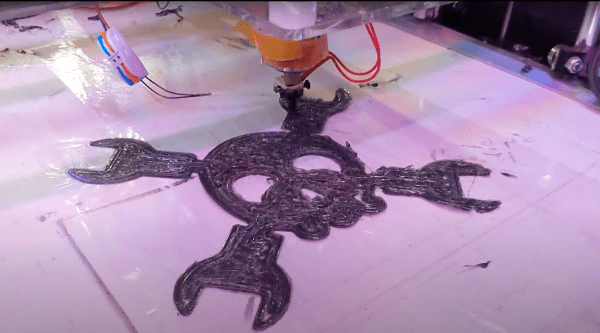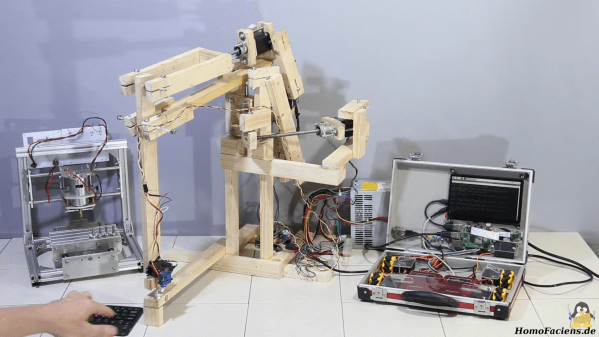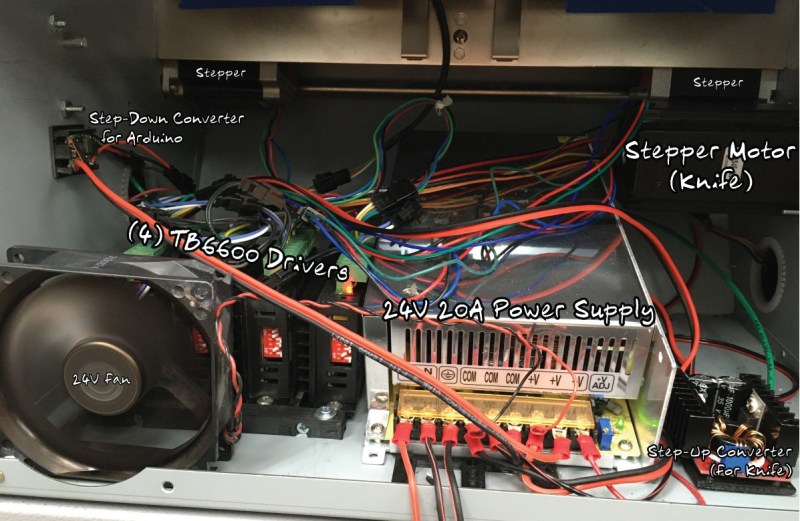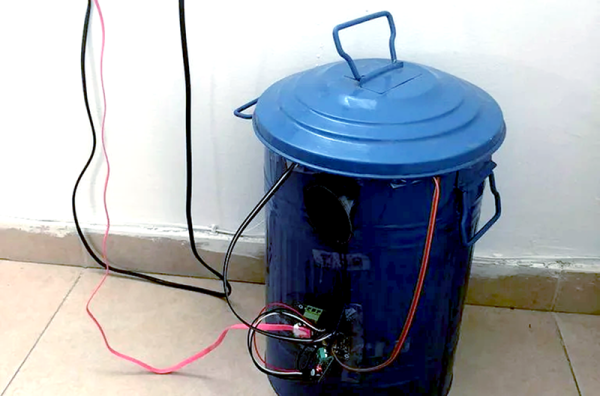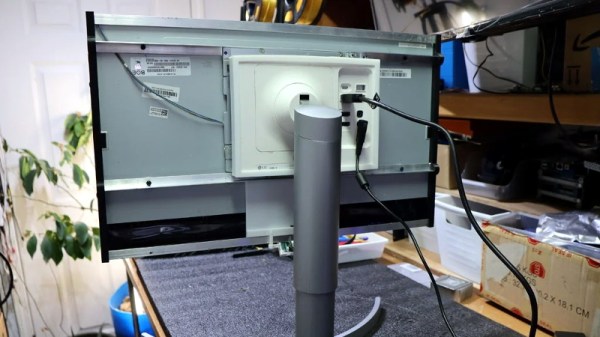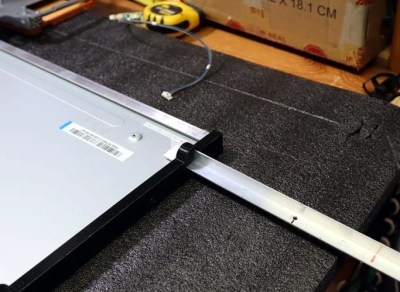These days, if you want a reverb effect, you just dial up whatever software plugin most appeals to you and turn the dials to taste. However, [Something Physical] specialises in… physical things… and thus built a reverb the old fashioned way. Using a trashcan, of course.
The concept is simple enough—the method of operation is exactly the same as any old plate reverb. Audio is played through a speaker connected to the plate (or trashcan), causing it to vibrate. The sound is then picked up at another point on the plate (or trashcan) with some kind of microphonic pickups, amplified, and there you have your reverb signal.
Given it’s built around a piece of street furniture, [Something Physical] has dubbed this the Street-Verb. It uses a class D amp to drive a speaker with a bolt stuck to it. The bolt is then put in contact with the trashcan itself to transfer the vibration. A pair of piezo elements are used as the pickups, run through a preamps built with a humble BC109C transistor. Since there are two pickups, the Street-Verb is effectively a stereo reverb unit, though the input is only mono. [Something Physical] set up the speaker driver and pickups to be easily movable, and was able to test the device with all kinds of street furniture, like gates and street signs, but the trashcan ‘verb setup is by far the most compelling.
We’ve featured other plate reverb builds before, too, albeit less garbage-themed. Video after the break.




